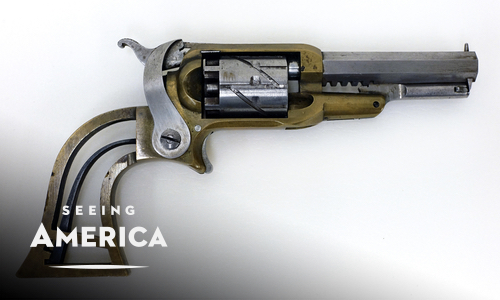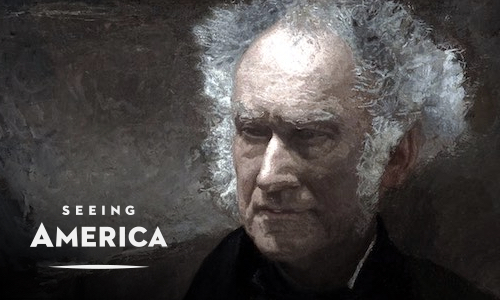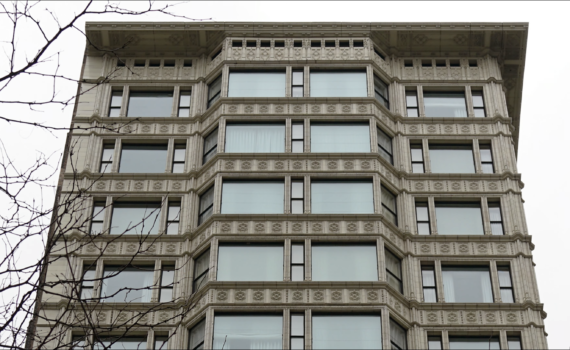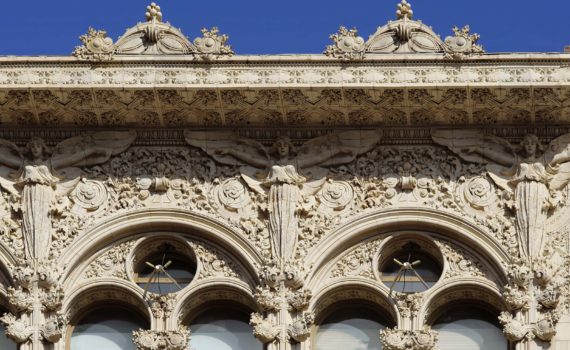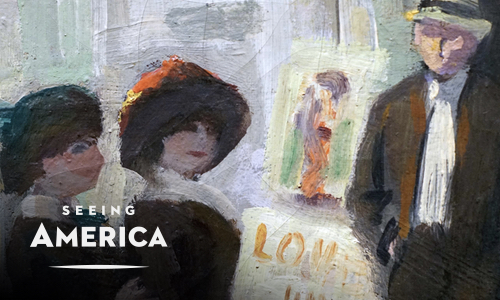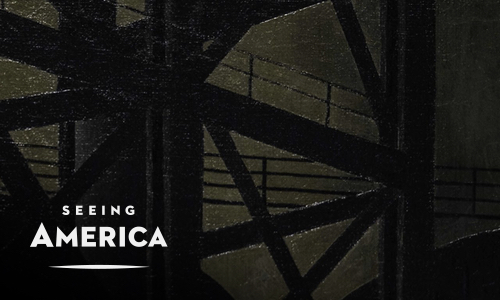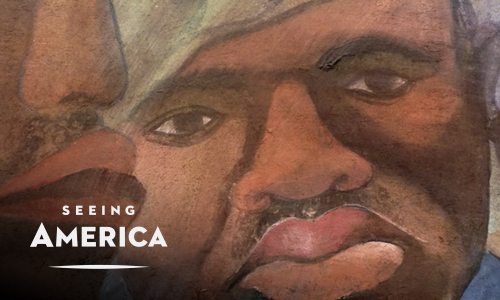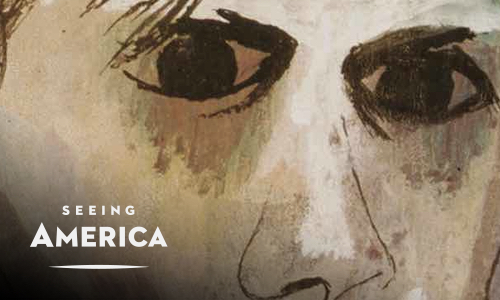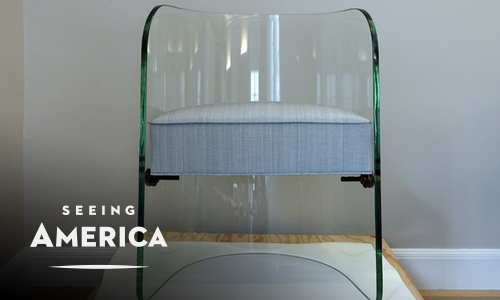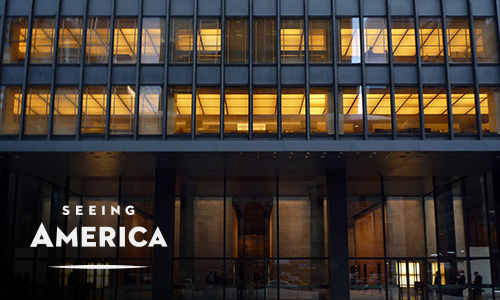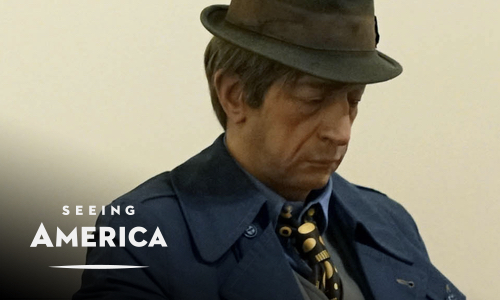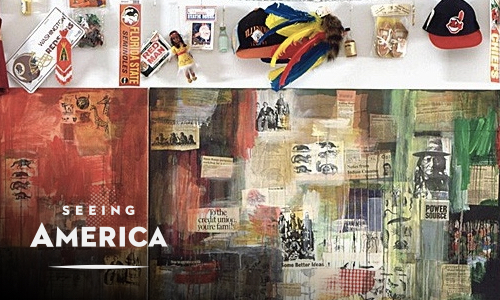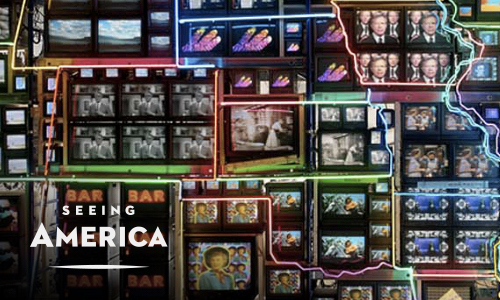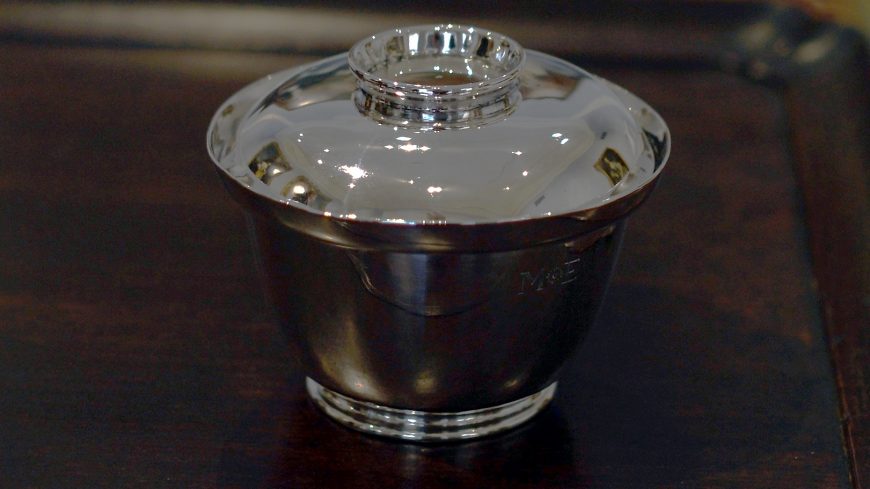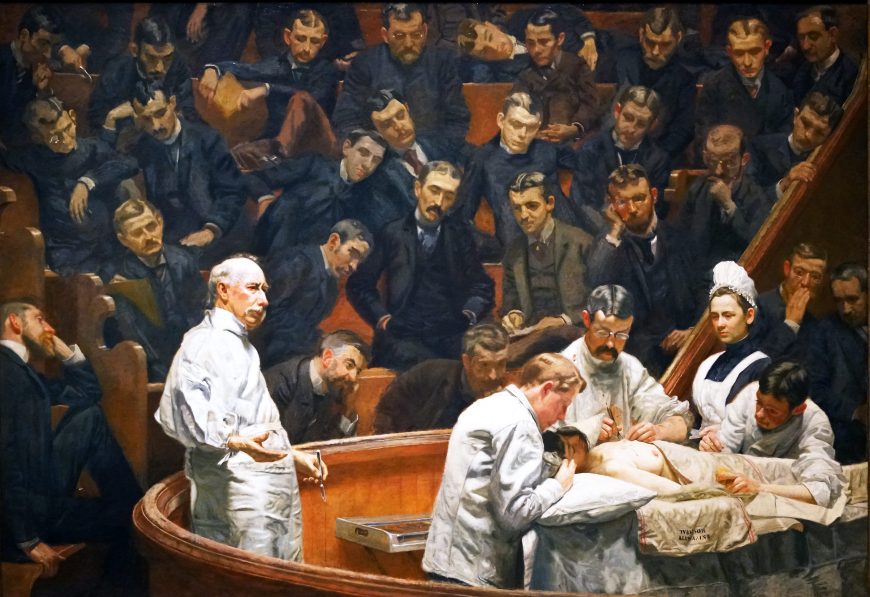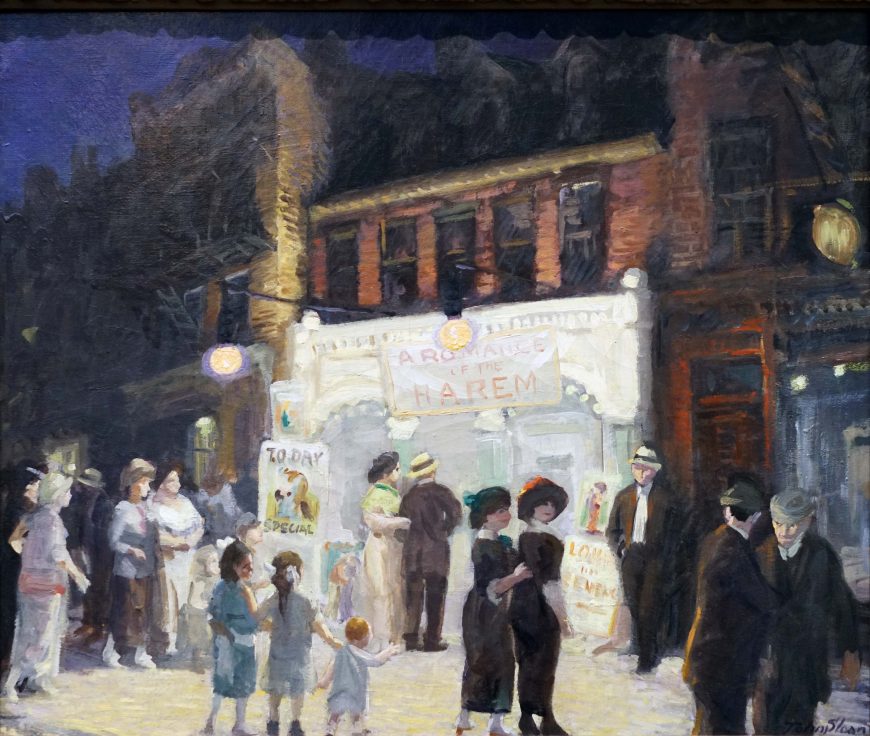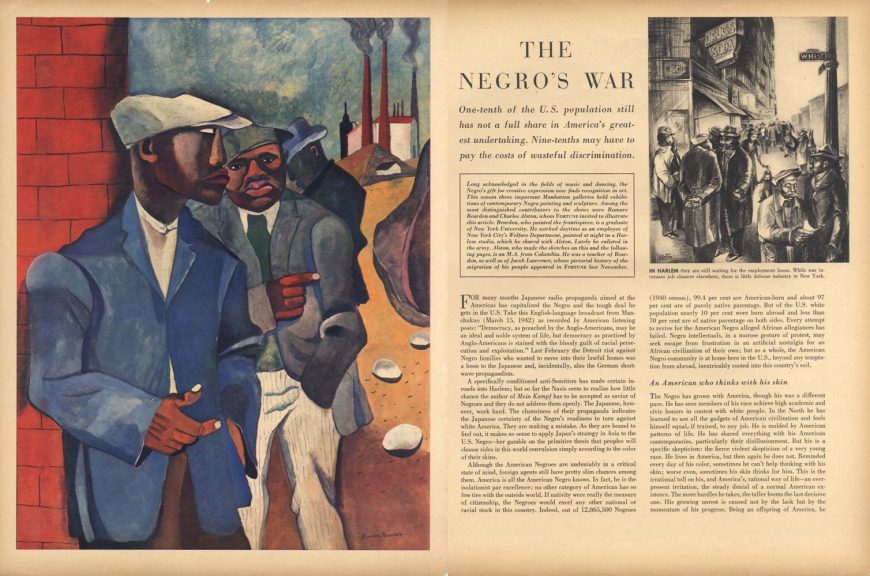“What a fascinating modern age we live in”
Essay by Dr. Bryan Zygmont
In the film Master and Commander: The Far Side of the World, set during the Napoleonic Wars, Captain Jack Aubrey (played by Russell Crowe) describes the engineering of a French ship: “Bluff above the water and sharp below….That’s why she’s so fast. Heavier, but fast despite it. That’s the future. What a fascinating modern age we live in.”
This brief cinematic quote underlies a basic truth: every era believes it is living in the most advanced of ages, a time flush with technology and modernity. Artists have frequently commented on this innovation, inventiveness, and inspiration, allowing us to explore the ways that technology, labor, and economic markets have transformed the history of the United States.
More than a beautiful bowl
In many instances, objects can eloquently whisper about their complex systems, if we know how to listen. A mid-eighteenth-century sugar bowl in the Wadsworth Atheneum Museum of Art is a wonderful example. We can appreciate the bowl for its beautiful appearance and the skill required for its creation. We can marvel at the elegant slope of its walls, its sturdy yet graceful base, the functionality of the upturned lid (which doubles as a serving container), and the highly-polished shine of the vessel’s silvery surface. In short, we can look at this bowl and exclaim, “Wow, that’s a beautiful bowl!”
It is. And yet, it is so much more than that. This bowl movingly speaks about complex labor systems and economic structures in the American colonies—and beyond—during the time of its creation. For this is not just any bowl, it is a bowl specifically designed to store and serve sugar, which (along with salt), is one of the most important of commodities in the history of humankind. Sugar was essential to the rise in popularity of beverages such as coffee and tea, and without the addition of sugar chocolate is exceedingly bitter. Sugar was crucial for the meteoric rise in the popularity of these luxuries.
Slavery and sugar
For centuries, sugar—once referred to as “white gold”—was affordable only to the elite. The excessive cost of what we now call table sugar was due to the laborious and time-consuming nature of harvesting sugarcane—the plant from which it comes—and because of the great distance sugar needed to travel from where it was first made—in what is now India—to the European markets that so desired it. Christopher Columbus brought sugarcane to the New World at the end of the fifteenth century, and less than 100 years later it was being grown throughout the islands of the Caribbean and then later on plantations in the southern colonies that eventually became the United States. Both of these locales had one thing in common: an abundant supply of enslaved labor that caused the cost of this expensive commodity to plummet. This lower cost made sugar accessible to people who previously could not have afforded it.
And if you are going to serve sugar, you need to also own a container in which to store and serve it. Given the social value sugar once held (remembering, of course, that it was frequently served with coffee and tea at gatherings of friends and family), it is not surprising that affluent people often aspired to hold it in extravagant vessels for the message it could convey. To be certain, a plastic $10 quartz watch purchased from a drug store tells time just as well as a $15,000 gold Rolex. And in this same vein, a simple ceramic jar could hold sugar just as well as an expensive silver vessel. But in both instances—in the Swiss-made timepiece and the extravagant silver bowl meant only to store and serve sugar—the message of affluence and exclusivity is apparent and very much a part of the objects’ intent. The bitter irony is that, in the case of the sugar bowl, those responsible for producing its contents were enslaved, and never enjoyed the fruit of their labor.
Not just any gun
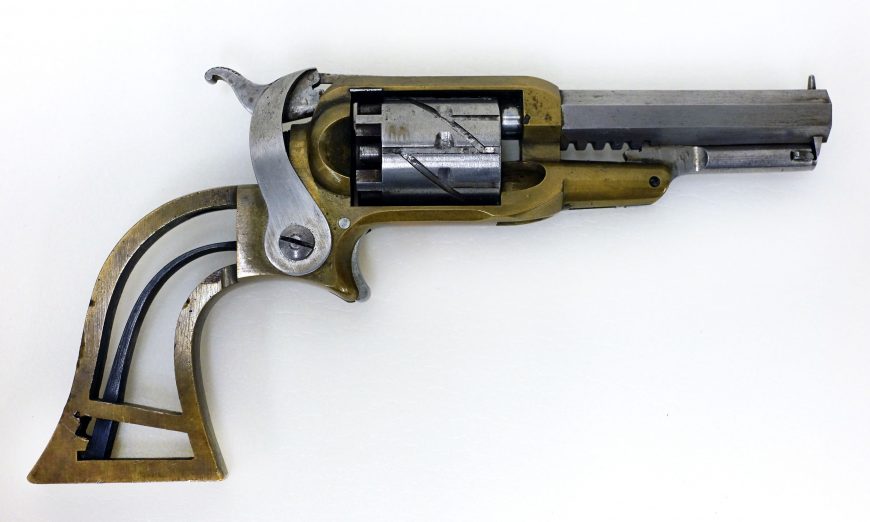
Elisha King Root for Samuel Colt, Experimental Pocket Pistol, Serial number 5, caliber .265 inches, barrel length 3 inches, overall length 7 inches, brass, steel, and iron, 1849-50 (Wadsworth Atheneum Museum of Art, Hartford, Bequest of Elizabeth Hart Jarvis Colt)
As history progressed, however, there has been a move towards reducing the labor of production, and this transition inevitably involves the development of new technologies. There is no better example of this than the creation of the Colt revolver. While to a 21st-century viewer, this prototype may look like just another gun, it would be difficult to overstate the importance of the Colt revolver in the history of the United States.
Simply put, this is not just any gun—it is a revolver. Prior to its development, the majority of guns were single-shot firearms, meaning that a user would need to load gunpowder and a bullet into the barrel, and place a percussion cap on the rear of the chamber that would create a small spark when struck by the hammer after the trigger was pulled. That small spark would then ignite the gunpowder, propelling the bullet through the barrel of the gun. To fire another round, the operator would need to repeat this process. A skilled user could often aim and fire three rounds per minute. The Colt revolver made this process much more streamlined, for instead of needing to reload after every shot, the revolver instead contained six pre-made bullets that could be fired as quickly as the operator could pull the trigger.
The beginnings of mass production
But the importance of this object is not just in its rate of fire. Samuel Colt—and the inventor of this object, Elijah Root, utilized new processes powered by the ideology of the Industrial Revolution to mass produce these firearms using a process that Henry Ford made famous almost 80 years later—the assembly line. In this system, no one person was responsible for the creation or assembly of the entire gun. Instead, workers were trained on a specific task, a task so specialized, that with some training, virtually anyone could complete it. The development of the assembly line replaced the well-paid gunsmith—a single highly trained person who made and repaired the gun—with an entire team of replaceable and inexpensive workers who had been trained to make only a single part of the whole. Technology was clearly changing weaponry in the middle of the nineteenth century.
Part of the brilliance of Root’s Colt revolver was the way in which it was assembled—from precisely machined individual parts. If one of these parts were to break, that part could be easily replaced rather than require the owner to purchase a new gun. In addition, because of the gun’s construction, it could often be repaired on the spot (assuming spare parts were available), rather than by an expensive gunsmith who might be many miles away—an undesirable situation when exchanging gunfire.
Developments in medicine
Technology was similarly changing the profession of medicine. A discussion of two portraits that Thomas Eakins painted fourteen years apart—The Gross Clinic (1875) and The Agnew Clinic (1889)—could diverge in a variety of different directions—the shocking and bloody realism, Eakins’ French training, the non-traditional portrait of a surgeon performing his vocation. Another of those directions leads to an exploration of the practice of medicine in the United States during the final quarter of the nineteenth century. In looking at these two paintings side-by-side, one sees how the art and act of surgery advanced in the decades following the American Civil War.
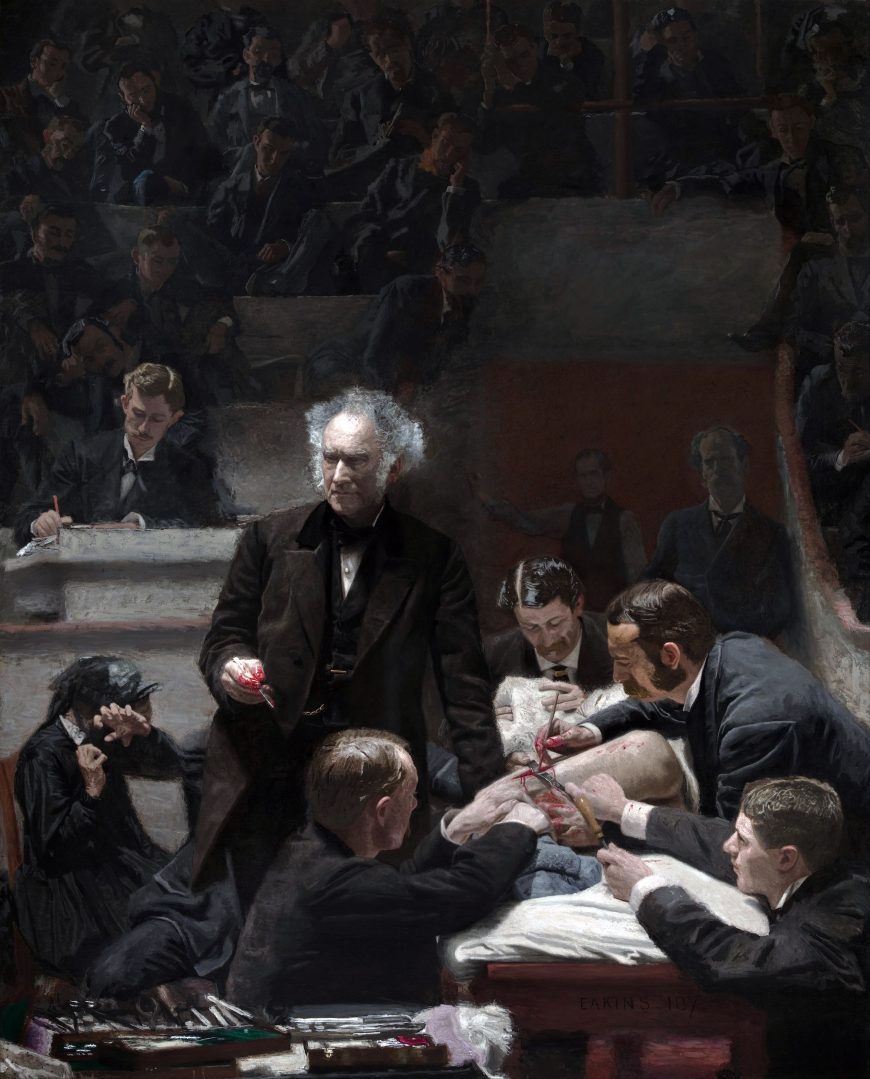
Thomas Eakins, Portrait of Dr. Samuel D. Gross (The Gross Clinic), 1875, oil on canvas, 243.8 x 198.1 cm (Philadelphia Museum of Art)
Those who have undergone major—or, perhaps, even minor—surgery in the past 170 or so years have sincerely benefitted from the development of anesthesia. Prior to 1846, physicians’ ability to explore the still-alive human body was limited by the patient’s ability to endure extreme pain. With first the successful utilization of ether for surgical use on 16 October 1846—and then one year later with chloroform—doctors were able to attempt surgical interventions once beyond their reach.
Through this lens, The Gross Clinic has much to say about the changes in medicine during the end of the nineteenth century. The world-famous surgeon Dr. Gross stands just to the left of the center of the composition, and our eyes seemingly arrive at two places: his illuminated and shiny forehead, and his bloodied (and ungloved!) left hand that holds his surgical scalpel. Gross stands and lectures in the amphitheater of the Jefferson Medical College before a group of all male medical students who watch the operation. Just to the right of Gross’s left elbow is the anesthesiologist, who holds a towel soaked with anesthesia over the teenage patient’s face. Gross performs a procedure to treat osteomyelitis, a serious infection in the patient’s left femur. Three other doctors reach towards the open incision; two retract the incision to explore the interior of the leg, and a third—the one without bloodied hands—stabilizes the patient’s lower leg.
Without a doubt, prior to anesthesia, Dr. Gross would have pursued a much more aggressive course of treatment: the amputation of the leg. Anesthesia allowed the doctor to attempt to save the leg. But significant risk of infection remained even after the successful completion of an operation until the discovery of the first antibiotic in 1928. Before this discovery, physicians sought ways to prevent infection, and this is clearly seen in Eakins’s second medial portrait, The Agnew Clinic.
At first glance, there are some similarities between the two images. In each, Eakins has brought particular attention to the surgeon by separating him from the operating table. And we may also observe in each the anesthesiologist and the team of physicians who attend to the patient with an all-male medical student audience observing from the amphitheater in the background. However, when The Gross Clinic is viewed next to The Agnew Clinic, some of the differences become immediately evident. Agnew (and his team) wear white surgical garments intended to reduce the introduction of germs to the surgical theater. In addition, by 1889, the underlying ideas behind sterilization first introduced earlier in the century by Joseph Lister—Listerine, now used as a mouthwash, was introduced in 1879 as a surgical antiseptic and was named in his honor—were commonly accepted when Eakins completed this later work. Importantly, one other change is immediately evident: a female surgical nurse—identified as Mary V. Clymer, an 1889 top-of-her-class graduate of the first graduating class at University of Pennsylvania Training School for Nurses—is clearly seen at the right of the composition. In the fourteen years between these two paintings, a concerted effort had been made to keep germs and bacteria out, and allow women in (though in very circumscribed roles).
Of cities and movies
Clearly, the field of medicine was changing at the close of the nineteenth century, but so too was American society as a whole. One of these transformations involved the shifting of the American population from rural areas to urban centers. At the opening of the nineteenth century, only 6.1% of Americans lived in urban areas. One century later, that number had skyrocketed to almost 40%. The next two censuses—1910 and 1920—saw further urban growth. By the early 20th century, the United States had been quickly transformed into a nation of modern cities.
And as a result, artists changed their focus from the landscape to the city. John Sloan was one such artist who took on the vibrant and energetic life of the early twentieth-century city as one of his favorite artistic subjects. As a member of The Ashcan School—a group of artists committed to realistically showing the life in New York City during the first two decades of the twentieth century—Sloan had a particular interest is depicting the working-class people he saw every day.
His 1913 painting Movies is a great example of this. Sloan shows a nighttime scene with the brightly illuminated marque of the newly constructed 600-seat Carmine Theater (located at 21 Carmine Street, the theater existed from 1910 to 1925). In 1913, movies—or as they were commonly called in early cinematic history, moving pictures—were not only new and exciting, they were often far more affordable than other forms of entertainment such as live theater. Early movie admissions, for example, were often a nickel (thus the name Nickelodeon). A nickel in 1913 is roughly equivalent to $1.25 in 2019, a cost that made going to the movies exceedingly affordable and one of the most egalitarian of cultural activities during the time.
And this inexpensiveness is evident when we look at the urban scene before us, and the title of the film currently showing—A Romance of the Harem—suggests a less-than-wholesome production. Those men, women, and children who mill about the Carmine Theatre appear to be more working class than affluent, and are lit by incandescent lamps that are emblematic of modern urban life during the opening years of the twentieth century.
Discrimination during war-time
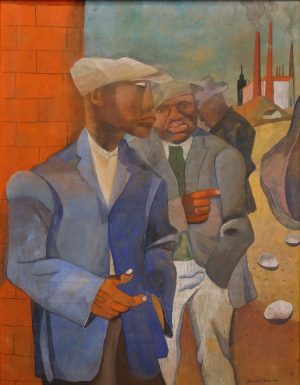
Romare Bearden, Factory Workers, 1942, gouache and casein on brown Kraft paper mounted on board, 94.93 × 73.03 cm (Minneapolis Institute of Art)
If Sloan gives us a view of leisure in New York City on the brink of World War I, Romare Bearden provides us with a perspective on the frustrations faced by African American workers after the beginning of World War II. Bearden’s 1942 Factory Workers comments on a variety of social and economic concerns in war-time America. And, like many great works of art, there is much more to Factory Workers than is evident at first glance.
This painting was commissioned for the 6 June 1942 issue of Fortune magazine and was placed opposite an article entitled, “The Negro’s War.” The date of publication is important—it is only six months after the United States officially entered World War II following the bombing of the naval base at Pearl Harbor on 7 December 1941. Together, Bearden’s painting and the article illustrate the exclusion of African Americans from the national war effort.
Bearden convincingly captures this frustration. Three African American men stand in the foreground, while an active steel factory can be clearly seen in the distant background. The man closest to us looks to our right, as if pointing us to the article printed on the magazine’s opposite page. The man behind him looks out at the viewer, but likewise asks us to address the article through the pointing gesture of his right hand. The third man, his anonymous face turned downwards, seemingly ignores the article. Importantly, they are all a great distance from the steel factory in the background, as if they have arrived at the plant hoping to work, but have found that they are excluded.
The United States prepared to enter World War II long before the Japanese attack on Pearl Harbor (December 7, 1941), and President Franklin Delano Roosevelt was keenly aware that entering of the conflict would have a profound affect upon the workforce within the defense industry in the United States. On 25 June 1941 he issued Executive Order 8802, and Bearden’s painting from the following year is a visual representation of it.
Roosevelt wrote:
WHEREAS it is the policy of the United States to encourage full participation in the national defense program by all citizens of the United States, regardless of race, creed, color, or national origin, in the firm belief that the democratic way of life within the Nation can be defended successfully only with the help and support of all groups within its borders; and
WHEREAS there is evidence that available and needed workers have been barred from employment in industries engaged in defense production solely because of considerations of race, creed, color, or national origin, to the detriment of workers’ morale and of national unity:
NOW, THEREFORE, by virtue of the authority vested in me by the Constitution and the statutes, and as a prerequisite to the successful conduct of our national defense production effort, I do hereby reaffirm the policy of the United States that there shall be no discrimination in the employment of workers in defense industries or government because of race, creed, color, or national origin, and I do hereby declare that it is the duty of employers and of labor organizations, in furtherance of said policy and of this order, to provide for the full and equitable participation of all workers in defense industries, without discrimination because of race, creed, color, or national origin…
—President Franklin D. Roosevelt Executive Order 8802 (June 25, 1941)
While there is little doubt that Roosevelt was interested in the ways in which people of German and Italian descent were being barred from employment in the defense sector, he was also keenly aware that African Americans were likewise shunned. And if Bearden’s painting did not make this clear enough, then the article it accompanied made a written argument of the same theme. In it, the author insisted that excluding African Americans from defense jobs was detrimental to industry, harmful to the overall war effort, and even more damaging to society as a whole.
From silver for sugar bowls to steel for submarines
From silver for sugar bowls to steel for submarines, the themes of technology, economics, and labor have played key roles in the development and growth of the American colonies and the United States of America. If we were but a colonial possession when the sugar bowl was made around 1750, we had become a world power 200 years later when Bearden chronicled the frustration of African Americans in being actively excluded from fully participating in the American war effort (and from political, economic, and social equality in the United States more broadly). Throughout this history, the United States has advanced in many areas—”What a fascinating modern age we live in!”—but has at the same time actively sought to exclude particular groups from participating in these developments.




